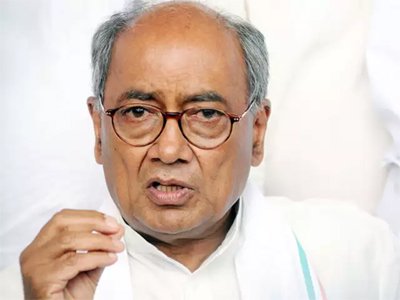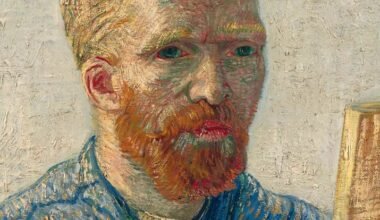Lal Bahadur Shastri, a prominent figure in India’s struggle for independence and its second Prime Minister, left an indelible mark on the nation’s history. Known for his integrity, humility, and unwavering commitment to the welfare of the common people, Shastri’s life and career continue to inspire generations of Indians.
Lal Bahadur Shastri Biography
This comprehensive biography looks into the various aspects of his life, including his birth, education, political career, family, and estimated net worth.
Date of Birth and Early Life
Lal Bahadur Shastri was born on October 2, 1904, in Mughalsarai, United Provinces (now Uttar Pradesh), British India. Coincidentally, he shared his birthday with Mahatma Gandhi, a fact that would later seem prophetic given Shastri’s dedication to Gandhian principles throughout his life.
Born into a humble family, Shastri’s early life was marked by hardship and struggle. His father, Sharada Prasad Srivastava, was a school teacher who passed away when Lal Bahadur was just a year and a half old. His mother, Ramdulari Devi, raised him and his two sisters with the help of her father, Hazari Lal.
Despite the financial constraints, young Lal Bahadur was determined to pursue education. He often had to swim across the Ganges to reach his school, carrying his books in a bundle on his head. This early display of determination and resilience would become hallmarks of his character in later years.
Education
Lal Bahadur Shastri’s educational journey was characterized by perseverance and a thirst for knowledge. His formal education began at East Central Railway Inter College in Mughalsarai. Despite facing financial difficulties, he excelled in his studies and was known for his diligence and sharp intellect.
In 1921, inspired by Mahatma Gandhi’s call for non-cooperation against British rule, Shastri left high school to join the independence movement. This decision marked a turning point in his life, aligning his personal goals with the larger struggle for India’s freedom.
However, Shastri’s pursuit of education did not end there. He later enrolled at Kashi Vidyapith in Varanasi, a nationalist university established by Mahatma Gandhi. Here, he studied philosophy and ethics, further solidifying his commitment to Gandhian principles.
In 1926, Shastri graduated from Kashi Vidyapith with a first-class degree in Philosophy and Ethics. The university bestowed upon him the title “Shastri,” meaning “scholar,” which he adopted as his surname. This title was a testament to his academic achievements and would remain with him for the rest of his life.
Throughout his educational journey, Shastri developed a keen interest in social reform and national politics. His time at Kashi Vidyapith exposed him to various political ideologies and strengthened his resolve to contribute to India’s independence movement.
Career
Lal Bahadur Shastri’s career was marked by a steady rise through the ranks of Indian politics, characterized by his unwavering dedication to public service and his reputation for honesty and integrity.
Early Political Involvement
After completing his education, Shastri became an active participant in the Indian independence movement. He joined the Indian National Congress and began working closely with prominent leaders like Jawaharlal Nehru and Purushottam Das Tandon.
In 1930, Shastri participated in the Salt Satyagraha led by Mahatma Gandhi. He was arrested and imprisoned for two and a half years for his involvement in the independence movement. This period of incarceration only strengthened his resolve and commitment to the cause of freedom.
Post-Independence Political Career
After India gained independence in 1947, Shastri’s political career flourished:
- 1947-1951: He served as the Parliamentary Secretary in Uttar Pradesh and later as the Minister of Police and Transport in the state government.
- 1951: Shastri was appointed as the General Secretary of the All-India Congress Committee, bringing him to the forefront of national politics.
- 1952-1956: He held various ministerial positions in the central government, including Minister of Railways and Transport.
- 1957-1964: Shastri served as the Minister of Commerce and Industry, and later as the Home Minister in Jawaharlal Nehru’s cabinet.
Prime Ministership
Following the death of Jawaharlal Nehru in 1964, Lal Bahadur Shastri was chosen as the second Prime Minister of India. His tenure, though brief, was marked by several significant events and achievements:
- Indo-Pakistan War of 1965: Shastri provided strong leadership during the conflict, famously giving the slogan “Jai Jawan Jai Kisan” (Hail the soldier, Hail the farmer) to boost national morale.
- Green Revolution: He supported policies that led to increased food grain production, laying the foundation for India’s Green Revolution.
- White Revolution: Shastri promoted the national campaign to increase milk production, which later became known as Operation Flood.
- Anti-corruption measures: He was known for his strict stance against corruption in public life.
Shastri’s tenure as Prime Minister, while only 19 months long, was crucial in shaping India’s post-independence trajectory. His leadership during the war with Pakistan and his emphasis on self-reliance in food production left a lasting impact on the nation.
Family
Lal Bahadur Shastri’s family life was as simple and principled as his public persona. He married Lalita Devi on May 16, 1928, in an arranged marriage. Lalita Devi, like Shastri, came from a humble background and shared his values of simplicity and integrity.
The couple had six children:
- Kusum Shastri (eldest daughter)
- Hari Krishna Shastri (eldest son)
- Anil Shastri
- Sunil Shastri
- Ashok Shastri
- Suman Shastri (youngest daughter)
Shastri was known to be a devoted family man, despite the demands of his political career. He instilled in his children the same values of honesty, simplicity, and public service that he embodied in his own life. His family often shared anecdotes about his frugality and his insistence on paying for his personal expenses, even when he held high office.
After Shastri’s untimely death in 1966, his wife Lalita Devi continued to live a simple life, refusing many of the benefits offered to the family of a former Prime Minister. She passed away in 1993, leaving behind a legacy of dignity and simplicity.
Today, several of Shastri’s descendants are involved in public life and politics, carrying forward his ideals and working to preserve his legacy.
Net Worth
Assessing the net worth of Lal Bahadur Shastri is challenging due to the passage of time and the limited financial records from that era. However, it is well-documented that Shastri led a life of extreme simplicity and was known for his financial integrity.
During his lifetime, Shastri was famous for his modest lifestyle. When he passed away, he reportedly owned no property in his name and left behind only a modest savings account. His family had to take a loan to pay off the car he had purchased shortly before his death.
While an exact figure for his net worth at the time of his death is not available, it is clear that Shastri did not accumulate significant wealth during his time in public office. His estate was primarily composed of his savings and any government benefits due to his family after his passing.
It’s worth noting that Shastri’s lack of material wealth was seen as a testament to his honesty and dedication to public service. His famous quote, “Simplicity and honesty can move the world,” was not just a saying but a principle he lived by throughout his life.
In modern terms, considering inflation and the value of any posthumous royalties from books about his life or commemorative items, the Shastri family’s net worth might be more substantial. However, the family has generally maintained a low profile and continued to live by Shastri’s principles of simplicity.
Legacy and Impact
Lal Bahadur Shastri’s impact on Indian politics and society extends far beyond his brief tenure as Prime Minister. His legacy is characterized by several key aspects:
- Ethical Leadership: Shastri set a high standard for ethical behavior in public life. His integrity and simplicity continue to be held up as examples for politicians and public servants.
- National Integration: His slogan “Jai Jawan Jai Kisan” became a rallying cry for national unity, recognizing the importance of both the military and the agricultural sector in nation-building.
- Self-Reliance: Shastri’s emphasis on self-sufficiency, particularly in food production, laid the groundwork for India’s Green Revolution and subsequent economic growth.
- Peaceful Resolution: Despite leading India during a time of war, Shastri was committed to peaceful resolution of conflicts. His participation in the Tashkent Agreement with Pakistan demonstrated this commitment.
- Social Reform: Throughout his career, Shastri advocated for social reforms, including the abolition of the caste system and the promotion of women’s rights.
Today, numerous institutions, roads, and public spaces across India bear Shastri’s name, serving as reminders of his contributions to the nation. The Lal Bahadur Shastri National Memorial Trust in Delhi works to promote his ideals and preserve his legacy for future generations.
Frequently Asked Questions
When and where was Lal Bahadur Shastri born?
Lal Bahadur Shastri was born on October 2, 1904, in Mughalsarai, United Provinces (now Uttar Pradesh), British India.
What is Lal Bahadur Shastri famous for?
Shastri is famous for being the second Prime Minister of India, his role in the Indian independence movement, his leadership during the 1965 Indo-Pakistan War, and his slogan “Jai Jawan Jai Kisan.”
How long was Lal Bahadur Shastri Prime Minister of India?
Lal Bahadur Shastri served as the Prime Minister of India for a brief period of 19 months, from June 9, 1964, until his untimely death on January 11, 1966.
What were Lal Bahadur Shastri’s major achievements as Prime Minister?
His major achievements include leading India during the 1965 war with Pakistan, promoting the Green Revolution to increase food production, initiating the White Revolution for milk production, and implementing anti-corruption measures.
How did Lal Bahadur Shastri die?
Shastri died on January 11, 1966, in Tashkent, Uzbekistan (then part of the Soviet Union), reportedly from a heart attack. However, the circumstances of his death have been a subject of controversy and speculation.
What is the meaning of ‘Shastri’ in Lal Bahadur Shastri’s name?
‘Shastri’ means ‘scholar’ in Sanskrit. It was a title given to Lal Bahadur upon completing his graduation from Kashi Vidyapith in 1926.
What was Lal Bahadur Shastri’s role in the Indian independence movement?
Shastri was an active participant in the independence movement. He joined the Indian National Congress, participated in the Salt Satyagraha, and was imprisoned multiple times for his involvement in freedom struggles.
What is the significance of Shastri’s slogan “Jai Jawan Jai Kisan”?
This slogan, meaning “Hail the soldier, Hail the farmer,” emphasized the importance of both the military and the agricultural sector in nation-building. It became a popular patriotic slogan in India.
How many children did Lal Bahadur Shastri have?
Lal Bahadur Shastri and his wife Lalita Devi had six children – two daughters and four sons.
What was Lal Bahadur Shastri’s educational background?
Shastri studied at East Central Railway Inter College in Mughalsarai and later graduated from Kashi Vidyapith in Varanasi with a degree in Philosophy and Ethics.
Was Lal Bahadur Shastri related to Mahatma Gandhi?
While not related by blood, Shastri was deeply influenced by Gandhi’s philosophy and principles. They shared the same birthday (October 2), which is often seen as a symbolic connection.
What was Lal Bahadur Shastri’s approach to governance?
Shastri was known for his simple living, high thinking approach. He emphasized integrity, honesty, and service to the nation in governance.
Did Lal Bahadur Shastri receive any awards or honors?
Posthumously, Shastri was awarded the Bharat Ratna, India’s highest civilian honor, in 1966.
How is Lal Bahadur Shastri remembered in India today?
Shastri is remembered as a symbol of integrity in public life. Many institutions, roads, and public spaces in India are named after him, and his birth anniversary is celebrated annually.
What was Lal Bahadur Shastri’s stance on nuclear weapons?
While Shastri supported peaceful uses of nuclear energy, he was against the development of nuclear weapons. However, he did authorize theoretical work on nuclear explosives in response to China’s nuclear test in 1964.
These frequently asked questions provide a comprehensive overview of Lal Bahadur Shastri’s life, career, and legacy, offering readers quick access to key information about this important figure in Indian history.






